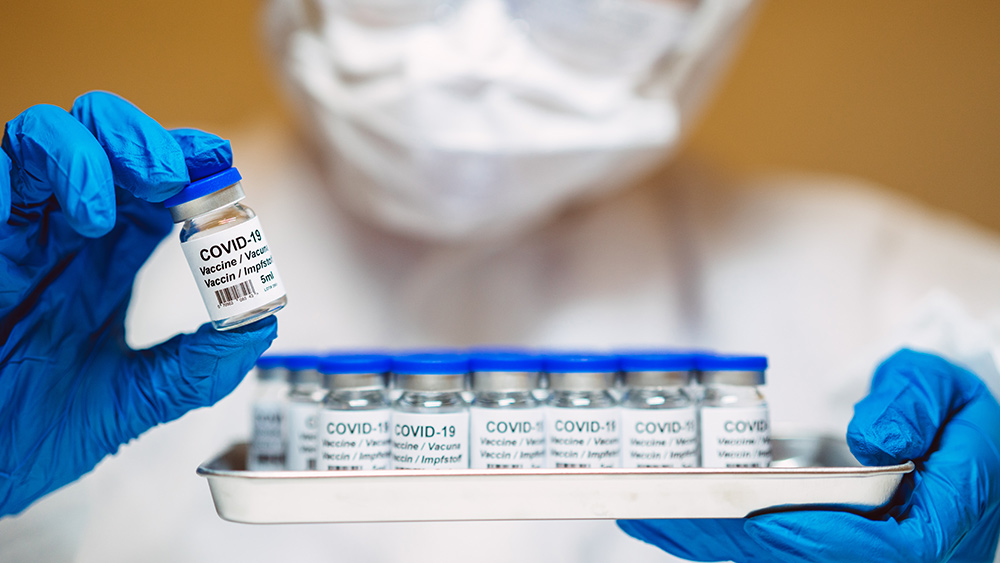 Parler
Parler Gab
Gab
- Physicists at CERN's LHC observed CP violation in baryons (like protons and neutrons) for the first time, specifically in the decay of the "beauty-lambda baryon." This asymmetry (2.45% more matter decays than antimatter) helps explain why the universe is matter-dominated.
- The Big Bang should have created equal matter and antimatter, leading to mutual annihilation. CP violation—previously seen only in mesons — is a key clue, but the Standard Model’s predictions are insufficient to fully explain the observed matter dominance.
- The discovery suggests unknown mechanisms (exotic particles or forces) beyond the Standard Model. Studying CP violation in baryons opens fresh avenues for testing fundamental theories.
- CERN plans the Future Circular Collider (FCC), a $16 billion, 91-kilometer successor to the LHC. Phase 1 (2040s) will study the Higgs boson, while Phase 2 (2070s) aims for 100 TeV collisions — potentially revealing dark matter or extra dimensions.
- The FCC could validate theories hinted at by the LHC’s findings. Each breakthrough—from the Higgs boson to baryon asymmetry—brings us closer to understanding why matter exists and what lies beyond known physics.
Why this discovery is pivotal
CP violation — a phenomenon where particles and their antiparticles behave differently — has long been considered essential to explaining the matter-dominated universe. According to the Big Bang theory, matter and antimatter should have been created in equal amounts, leading to mutual annihilation and leaving behind a void. Yet, the observable universe is filled with galaxies, stars and planets made of matter. The Standard Model of particle physics predicts some degree of CP violation, but the observed asymmetry is far too small to account for the overwhelming abundance of matter. Until now, CP violation had only been definitively observed in mesons — particles composed of quark-antiquark pairs. The detection of this asymmetry in baryons opens an entirely new avenue for exploration. "The more systems in which we observe CP violations, the more opportunities we have to test the Standard Model and look for new physics," Vagnoni explained. This discovery suggests that additional, undiscovered mechanisms may be at play, potentially involving exotic particles or unknown forces.The future of particle physics: Upgrading the LHC and building the FCC
While the LHC continues to yield groundbreaking insights, CERN is already planning its next-generation particle accelerator: the Future Circular Collider (FCC). This colossal machine, envisioned as a 91-kilometer (56-mile) ring buried 656 feet beneath Geneva, will dwarf the LHC in both size and power. With an estimated cost of $16 billion, the FCC will operate in two phases. The first, targeting the 2040s, will focus on precision studies of the Higgs boson, while the second phase (around 2070) aims to achieve proton collisions at an unprecedented 100 teraelectronvolts (TeV)—seven times the energy of the LHC. "The FCC could become the most extraordinary instrument ever built to study the laws of nature," said CERN Director-General Fabiola Gianotti. Such extreme energies may allow scientists to probe dark matter, extra dimensions, or other phenomena beyond the Standard Model. However, geopolitical and financial challenges remain. While the U.S. has expressed support under the Biden administration, funding uncertainties persist. "They’re 'under the radar of the Trump administration’s cuts,'" noted Costas Fountas, CERN Council president, quoting U.S. officials. Nevertheless, Europe appears committed to moving forward, with a final decision on the FCC expected by 2028.Connecting the dots: From baryon asymmetry to the cosmos
The FCC’s potential discoveries are deeply intertwined with the LHC’s latest findings. If CP violation in baryons hints at new physics, the FCC could provide the necessary data to confirm or refute these theories. As Giorgio Chiarelli of Italy’s National Institute of Nuclear Physics remarked, "History of physics tells us that when there is more data, human ingenuity extracts more than originally expected." From the Higgs boson’s discovery in 2012 to the recent observation of CP violation in baryons, CERN’s particle colliders are peeling back the layers of cosmic history one collision at a time. Each breakthrough brings humanity closer to answering fundamental questions: Why does matter exist at all? What forces shaped the early universe? And what lies beyond the Standard Model? With the FCC on the horizon, humanity may soon uncover the deeper mechanisms that spared the universe from annihilation—and perhaps even glimpse the hidden laws governing reality itself. As physicists continue to push the boundaries of knowledge, one thing is certain: the quest to understand the universe’s greatest mysteries is far from over. Sources include: LiveScience.com PopularMechanics.com APNews.comCommon household chemicals linked to America’s depression epidemic
By Willow Tohi // Share
Pomegranate: Evidence-based benefits of this antioxidant superstar
By News Editors // Share
Hackers are selling counterfeit phones with crypto-stealing malware
By Ava Grace // Share
Study: The benefits of vitamin, mineral and cofactor supplementation for people with autism
By Olivia Cook // Share
“Token Economy”: The Web3 revolution reshaping the internet’s future
By Belle Carter // Share
Governments continue to obscure COVID-19 vaccine data amid rising concerns over excess deaths
By patricklewis // Share
Tech giant Microsoft backs EXTINCTION with its support of carbon capture programs
By ramontomeydw // Share
Germany to resume arms exports to Israel despite repeated ceasefire violations
By isabelle // Share










